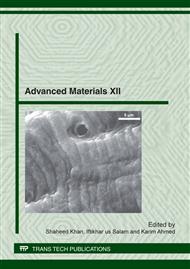p.67
p.75
p.80
p.89
p.98
p.105
p.111
p.118
p.124
The Effect of Double Pass GMAW Process on Microstructure and Mechanical Properties of Aa 6061-T6 Joining Plates
Abstract:
This paper presents an investigation on microstructure and mechanical properties of welded AA 6061-T6 plate using filler metal ER 4043 in the Gas Metal Arc Welding (GMAW) process. Double pass welding technique on both sides of 5 mm thick plate or more is required to provide sufficient weld pool in the joint. The weld metal of the first welding pass exhibits finer microstructure than the second welding pass. The size of Mg2Si precipitations in the heat-affected zone (HAZ) region is larger than in the base metal due to the welding process that reheats the alloy from the T6 condition above the eutectic temperature. Rapid cooling of the first pass and moderate cooling rate for the second pass during weld metal solidification eventually resulted in significantly change the shape and size in the microstructure that had affected the hardness and mechanical properties. Comparisons made to the base metal on the hardness test results found that the hardness of first pass weld metal dropped by 15%, and by 37.5% for the second weld metal, while the hardness at the boundaries of the first and second weld metals dropped by 32.5%. The ultimate tensile strength and strain of the weld joint with ER 4043 also decreased by 48% and 94% respectively. Based on the findings of the study, it is concluded that even though the double sided welding technique is able to overcome shallow weld penetration to avoid stress concentration that leads to the fatigue failure, the metallurgical changes eventually contributes to degradation of mechanical properties.
Info:
Periodical:
Pages:
98-104
Citation:
Online since:
May 2012
Keywords:
Price:
Сopyright:
© 2012 Trans Tech Publications Ltd. All Rights Reserved
Share:
Citation:


